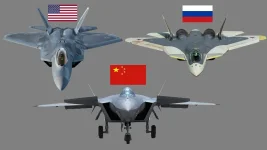- Views: 1K
- Replies: 6

A recent image circulating on Chinese social media has shed light on the significant advancements made in China's J-31 stealth fighter program. The photograph, purportedly captured during a test flight, showcases the latest prototype of the J-31, revealing key design updates that have sparked considerable interest in the global defence community.
One of the most noteworthy additions is an Electro-Optical Targeting System (EOTS) mounted under the nose of the aircraft. This technology, mirroring that found on the American F-35, significantly bolsters the J-31's ability to detect and track enemy targets without relying solely on radar.
The rapid progress of the J-31 program indicates that China is making substantial strides in its indigenous fighter technology. The J-31, China's second stealth fighter after the domestically focused J-20, is primarily intended for the international market.
Nations such as Pakistan have already expressed interest in acquiring the J-31, suggesting its potential as a formidable player in the global arms trade. The success of the J-31 will ultimately hinge on its ability to achieve a delicate balance between cost, performance, and stealth capabilities.
The potential procurement of J-31s by the Pakistan Air Force adds another layer of complexity to the regional security landscape. Reports suggest that Pakistani pilots have already begun training on Chinese fifth-generation fighter jets, implying that the acquisition process is well underway. Should the PAF acquire the J-31, it would gain a considerable technological advantage, potentially altering the strategic balance in the region.
As China continues to invest heavily in its defence industry, the J-31 is poised to become a pivotal asset for both its military and its international partners. The global community will undoubtedly be closely observing the further development and deployment of this advanced fighter jet, as it has the potential to reshape the future of aerial warfare.




